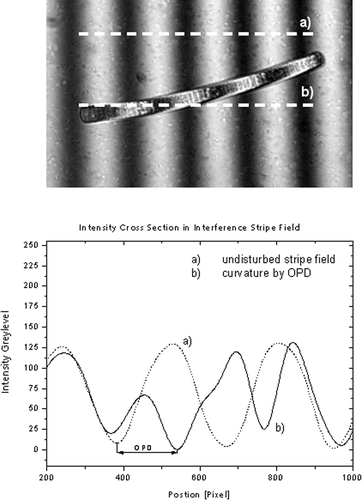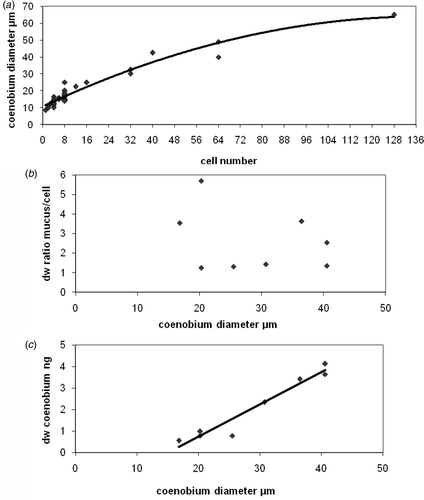Figures & data
Fig. 1. Phormidium sp. in the monochromatic (λ = 546 nm) stripe field of the Leitz Dualbeam microinterferometer. The optical path difference (OPD) caused by the object leads to a curvature in the interference stripe. The distance between the undisturbed stripes is the direct measure of the OPD and can be read out directly from the image.

Fig. 2. (A) Determination of OPD by phase-stepping algorithm. This method is suitable for coloured or complex objects like Gloeocapsa. The bright field image shows that the algae have a green colour due to chlorophyll content, so the specific interference colour of the cell in the homogenous field is a mixture in the chlorophyll specific colour. By shifting the overall phase between reference and object wave in four different positions, which differ by a quarter of a wavelength or π/2 (where 2π is a full wavelength) the OPD distribution in the image plane can be calculated by a phase stepping algorithm (Schwider, Citation1983). (B) The result is a false coloured picture, in which OPD can be determined.

Table 1. Trichome and cell sizes (diameter) of eight cyanobacterial species – comparison of two methods.
Fig. 3. Parameters related to coenobial diameters of Gloecapsa spec. Points represent single coenobia. (a) Cell numbers of single coenobia; (b) dry weight ratio mucous material per cell; (c) the total (cells and mucilage) dry weight of the coenobia.
